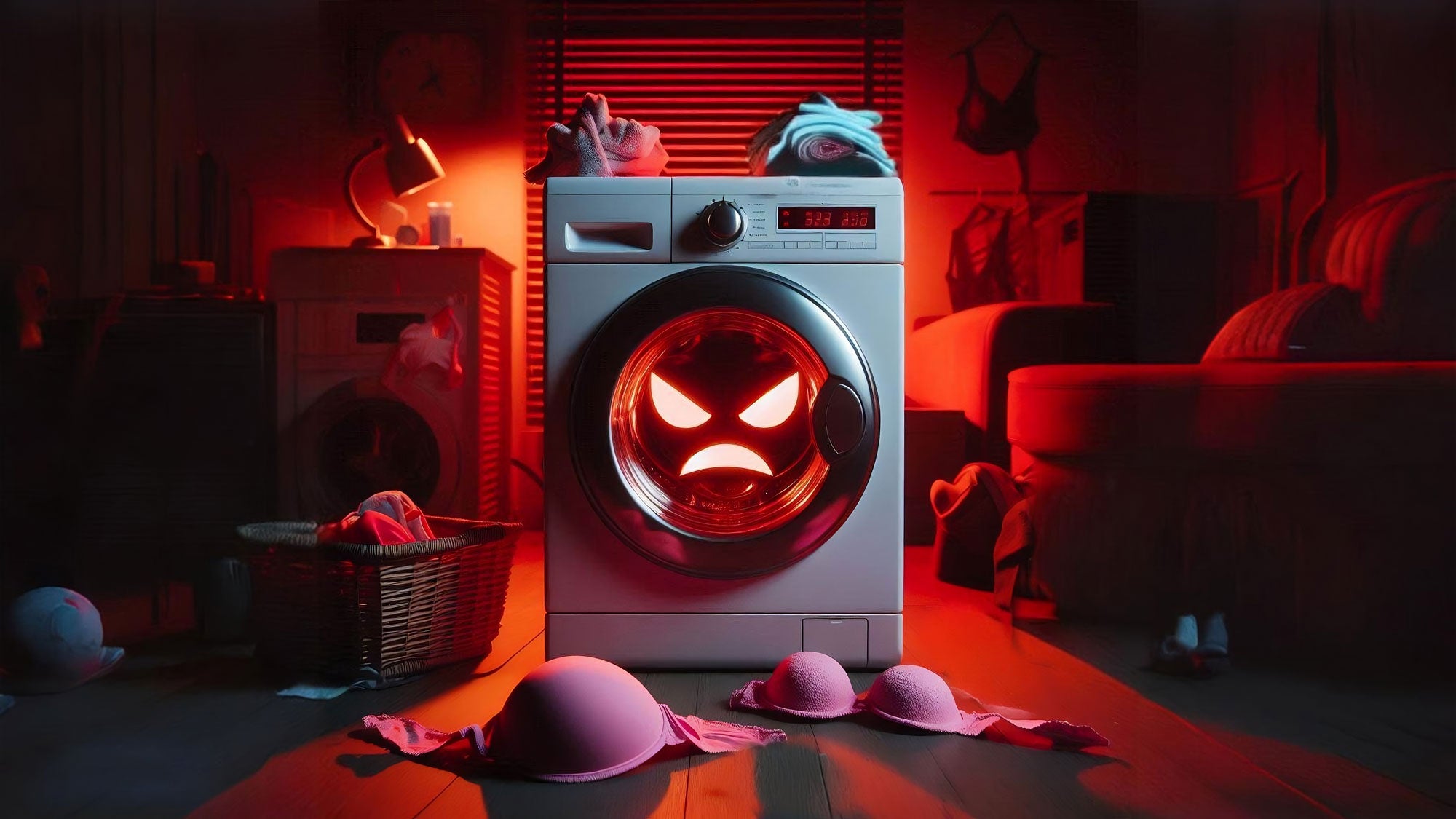Did you know that creating a single plus-size bra can involve up to 50 individual components, each rigorously tested for quality before being assembled? High-quality lingerie brands like Prima Donna require 40 to 50 meticulous steps in the assembly process, demanding extensive manual labor and attention to detail. This complexity and dedication to quality are just some of the reasons why bras can be so expensive.
In this blog, we'll dive deeper into the various factors that contribute to the high cost of bras and offer our recommendations of brands to suit every budget, and how to get the best bang for your buck!

Cheap Bras vs. Expensive Bras
While it's possible to pick up a cheap bra from your local department store, you often get what you pay for. Mass-produced bras at lower price points are typically made with less durable materials and construction methods, which means they won't last as long and may not provide the best support or comfort. The elastic bands may stretch out quickly, the fabric can wear thin, and the overall fit may degrade after just a few washes. In contrast, higher-priced bras are usually made with superior materials such as high-quality lace and specialised stretch fabrics. These bras undergo rigorous testing and meticulous assembly processes, making them more robust and longer-lasting. Brands that invest in better materials and craftsmanship ensure that their bras maintain their shape, support, and comfort over time. Investing in a higher-priced bra can save you money in the long run by reducing the need for frequent replacements. Additionally, these bras often provide a better fit and enhanced support, contributing to better posture and overall comfort, which are crucial for everyday wear.

Who and What is Involved in the Creation of a Bra?
Creating a bra involves numerous skilled professionals and intricate processes from the initial concept to the final product available in your local lingerie store. Here's a glimpse into some of the key players and tasks involved:
- Designers: Conceptualising the design
- Material Engineers: Sourcing and testing fabrics
- Pattern Makers: Creating templates for bulk production
- Product Managers: Overseeing the creation of the bra
- Production Managers: Managing the manufacturing process
- Manufacturers: Ethical production by skilled labor
- Quality Assurance Teams: Conducting wear tests and quality assessments
- Warehouse Staff: Storing items in various sizes and colors
- Distribution Teams: Picking and packing for wholesalers
- Brand Managers: Ensuring the product resonates with customers
- Marketing Teams: Handling photography, videography, website updates, socials and more
- Sales Representatives: Presenting and selling the product to retailers
- Accountants: Managing finances throughout the process
With so many people involved and so much attention to detail required, it's no wonder the price starts to go up for high-quality bras. These brands are dedicated to providing products that not only meet your style preferences but also last longer. Maintaining a good cleaning regimen and rotating between a few bras can further extend their lifespan.

Design and Engineering
The design and engineering process for bras is both complex and essential for ensuring a comfortable and supportive fit. Higher-quality brands go the extra mile in this regard. For instance, Prima Donna wraps their underwires with rubber to enhance wearer comfort and prevent poking.
Design teams must ensure that bras are not only aesthetically pleasing but also functional, providing necessary support and features such as underwire, racerback convertibility, adjustable straps, moulded cups, padding, push-up elements, and moisture-wicking fabrics. Each feature must be meticulously designed and tested for both functionality and appearance.

Labor and Manufacturing
The construction of bras requires highly skilled labor. Unlike many other products, bras involve intricate sewing and assembly that can only be done by experienced artisans. Each bra can have up to 50 individual components, and each size variation must be produced with the same level of precision. Unlike pyjamas that come in 4 - 10 sizes, bra size ranges often including over 50 sizes for a single style; 8A, 10A, 12A, 14A, 16A, 18A, 20A, 8B, 10B and so on. This extensive manual labor contributes to the higher cost of bras.

Brand and Marketing
In today's competitive market, branding and marketing are crucial for lingerie brands. They must provide retailers with various types of product imagery, from plain background shots to styled model photos and feel-good lifestyle images. Additionally, brands must promote their products through social media advertising, influencer partnerships, and traditional methods such as catalogues and retail signage. They also need to analyse campaign performance to ensure profitability and customer satisfaction, adjusting future products accordingly. All these marketing efforts add to the overall cost of bras.
Additional Factors: Ethical and Sustainable Practices & Inclusivity
Many brands are committed to ethical and sustainable practices, which can increase costs. This includes using recycled materials, ensuring fair wages, and maintaining safe working conditions. Offering a wide range of sizes, from extra small to plus size, also requires additional resources and impacts the price. These commitments reflect a brand's dedication to quality and inclusivity.
Recommendations for Every Budget
We've compiled a list of recommended bra brands for various budgets, whether you're looking for something affordable or a luxurious investment piece.
Small Budget (Under $50)
- Ambra
- Triumph
Medium Budget ($50 - $100)
- Triumph
- Fantasie
- Elomi
- Wacoal
- Panache
- Freya
- Goddess
High Budget ($100+)
- Samanta
- Anita
- Corin

Size Matters
When it comes to bras, size matters significantly. Fuller figure bras need to be stronger and more supportive to adequately support the bust, compared to bras designed for smaller busts. This means they often require more robust materials and construction techniques, which can contribute to a higher price point. Ensuring you are wearing the right size is also crucial; a poorly fitting bra can exacerbate how quickly it loses its shape and support. Wearing the correct size not only enhances comfort and support but also helps extend the lifespan of your bra, making it a more worthwhile investment.

Appreciating The Process
Understanding why bras are expensive helps appreciate the craftsmanship, materials, and processes that go into creating these essential garments. From intricate design and engineering to skilled labor, every step ensures quality, comfort, and durability. Ethical practices and inclusive sizing also contribute to the cost, highlighting the commitment of high-quality brands.
While high-quality bras come at a higher price, they offer better support and longevity. To save on costs, check out our clearance section with bras at 50% off. For a perfect fit and to avoid shipping costs and returns, visit our Melbourne store for an in-store fitting.
Whether on a budget or looking to splurge, invest in quality bras for lasting comfort and style.
FAQs
How much does an average bra cost?
The cost of a bra can vary greatly. For a well-made, middle-of-the-road bra, you should expect to pay around $70-90 AUD. Fuller cup bras can be more expensive as they require more structure and support than smaller cups.
How many bras should a woman own?
It's recommended to own at least three bras: one to wear, one in the wash, and one in the cupboard. Additionally, having at least two sports bras ensures you always have a clean one when you're active.
How long should a bra last?
Depending on your size, your fit, and how you care for your bra, it should last between 6-9 months. Over time bras lose their shape as the elastic deteriorates. However, with good care, you can extend the life of your bra. Check out our blog on how to best care for your bra for more tips.


